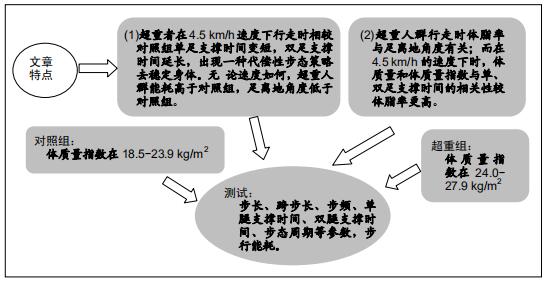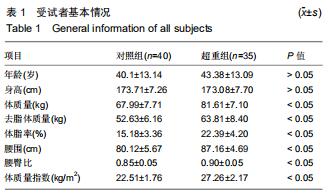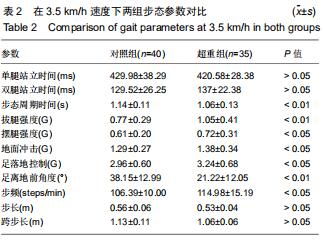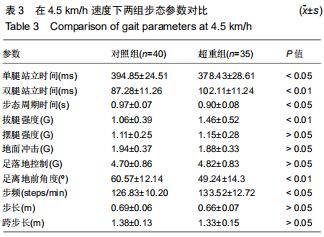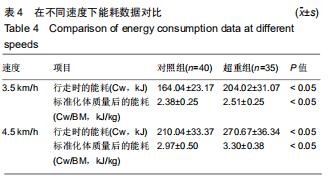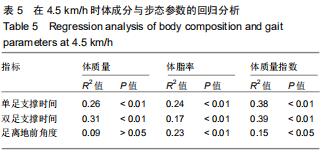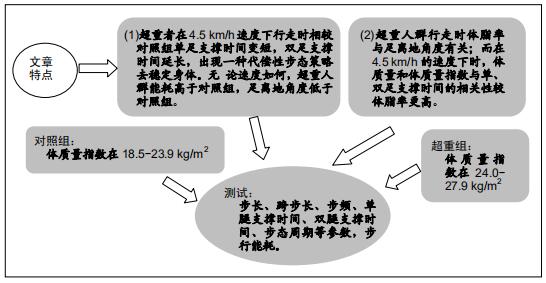|
[1] 王莉,于卫华,徐忠梅.社区老年人常速行走的步态特征及影响因素[J].中国老年学杂志,2018,38(5):1245-1248.
[2] 闫松华,王露,梁秀桥,等.肥胖儿童背包行走时的步态特征[J].中国组织工程研究,2017,21(24):3900-3905.
[3] SINGH B, VO H, FRANCIS SL, et al. Changes in Gait over a 30-min Walking Session in Obese Females. Med Sci Sports Exerc. 2017;49(3):555-562.
[4] 戴昕,李圆.超重肥胖对中老年女性步态及平衡功能的影响[J].首都体育学院学报,2016,28(5):476-480.
[5] 王莉,于卫华,徐忠梅.社区老年人双重任务行走步态特征与跌倒的关系研究[J].护理学杂志,2016,31(15):76-79.
[6] AGOSTINI V, GASTALDI L, ROSSO V, et al. A Wearable Magneto-Inertial System for Gait Analysis (H-Gait): Validation on Normal Weight and Overweight/Obese Young Healthy Adults.Sensors (Basel). 2017;17(10).pii: E2406.
[7] 张昊华,闫松华,方沉,等.用便携式步态分析仪评估全髋关节置换术手术效果[J].医用生物力学,2015,30(4):361-366.
[8] 周萌,曹光磊,张宽,等.便携式步态分析仪量化评价全膝关节置换病人的步态特征[J].中国矫形外科杂志,2015,23(7):615-619.
[9] 刘艳成,夏群,胡永成,等.便携步态分析量化评价脊髓型颈椎病患者的步态特征[J].中国组织工程研究,2014,18(11):1774-1779.
[10] MURO-DE-LA-HERRAN A, GARCIA-ZAPIRAIN B, MENDEZ-ZORRILLA A. Gait Analysis Methods: An Overview of Wearable and Non-Wearable Systems, Highlighting Clinical Applications.Sensors (Basel). 2014;14(2):3362-3394.
[11] ZHANG K, PI-SUNYER FX, BOOZER CN. Improving Energy Expenditure Estimation for Physical Activity. Med Sci Sports Exerc.2004;36(5):883-889.
[12] ZHANG K,WERNER P,MING S,et al.Measurement of Human Daily Physical Activity.Obesity. 2003;11(1):33-40.
[13] SAREMI K.Reliability and Validity of Bilateral Thigh and Foot Accelerometry Measures of Walking in Healthy and Hemiparetic Subjects.Neurorehabil Neural Repair. 2006;20(2): 297-305.
[14] HUDDLESTON J, ALAITI A, GOLDVASSER D,et al. Ambulatory measurement of knee motion and physical activity: Preliminary evaluation of a smart activity monitor.J Neuroeng Rehabil. 2006;3:21.
[15] 高萌,魏玉虾,吕筠,等.中国成年人代谢异常相关的体质指数和腰围切点研究[J].中华流行病学杂志,2019,40(12):1533-1540.
[16] 鹿琦,朱晓梅.南京市40~60岁人群能量消耗相关因素研究[J].南京医科大学学报(自然科学版),2017,37(4):437-441.
[17] Fabiana Rodrigues Silva AMDS. Biomechanical alterations of gait on overweight subjects.Res Biomed Eng.2018;4(34): 291-298.
[18] MENG H, O CONNOR DP, LEE B, et al. Alterations in over-ground walking patterns in obese and overweight adults.Gait Posture. 2017;53:145-150.
[19] HUANG L, CHEN P, ZHUANG J, et al.aMetabolic cost, mechanical work, and efficiency during normal walking in obese and normal-weight children.Res Q Exerc Sport. 2013;84 Suppl 2:S72-79.
[20] BROWNING RC, KRAM R. Effects of Obesity on the Biomechanics of Walking at different speeds. Med Sci Sports Exerc. 2007;39(9):1632-1641.
[21] DUFEK JS, CURRIE RL, GOUWS P,et al.Effects of overweight and obesity on walking characteristics in adolescents.Hum Mov Sci. 2012;31(4):897-906.
[22] BROWNING RC, KRAM R.Energetic Cost and Preferred Speed of Walking in Obese vs.Normal Weight Women.Obes Res. 2005;13(5):891-899.
[23] BROWNING RC, BAKER EA, HERRON JA,Et al. Effects of obesity and sex on the energetic cost and preferred speed of walking.J Appl Physiol (1985). 2006;100(2):390-398.
[24] LAROCHE DP, MARQUES NR, SHUMILA HN,et al. Excess Body Weight and Gait Influence Energy Cost of Walking in Older Adults.Med Sci Sports Exerc. 2015;47(5):1017-1025.
[25] DARYABOR A, ARAZPOUR M, SHARIFI G, et al. Gait and energy consumption in adolescent idiopathic scoliosis: A literature review.Ann Phys Rehabil Med. 2017;60(2):107-116.
[26] ABOUTORABI A, ARAZPOUR M, BAHRAMIZADEH M, et al.The effect of aging on gait parameters in able-bodied older subjects: a literature review.Aging Clin Exp Res. 2016;28(3): 393-405.
[27] KIM OY, SHIN YK, YOON YK, et al.The Effect of Treadmill Exercise on Gait Efficiency During Overground Walking in Adults With Cerebral Palsy.Ann Rehabil Med. 2015;39(1): 25-31.
[28] MENG H, O CONNOR DP, LEE B, et al. Effects of adiposity on postural control and cognition.Gait Posture. 2016;43: 31-37.
[29] MESSIER SP, BEAVERS DP, MIHALKO SL, et al. The effects of intensive dietary weight loss and exercise on gait in overweight and obese adults with knee osteoarthritis. The Intensive Diet and Exercise for Arthritis (IDEA) trial.J Biomech. 2020;98:109477.
|
